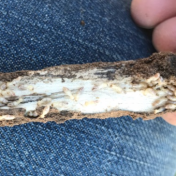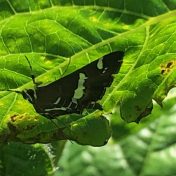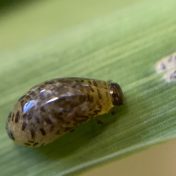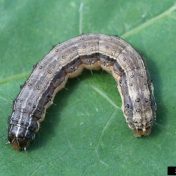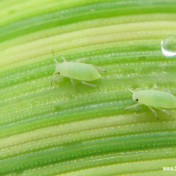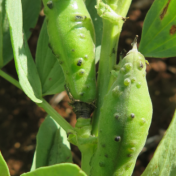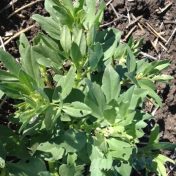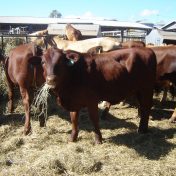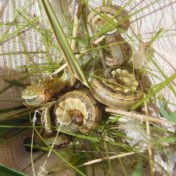Termites are common in undisturbed parts of the landscape, playing an important role in the ecosystem. It is unusual to find them in crops—but in 2020, there have been several reports of termites in winter cereals. The first reports were received during crop establishment, and more were received once the crops started to come out in head and set grain…. Read more »
Beet webworm (Spoladea recurvalis) moths are being seen in huge numbers in mungbean crops at present. The moths are brown with white bands across the wings, and rest with their wings swept back. Those familiar with bean podborer (Maruca vitrata) will see the similarities between the two moths – both small brown moths that move readily when disturbed. At rest,… Read more »
Over the past week, the Queensland Department of Agriculture and Fisheries (DAF) has received a number of enquiries about leaf damage in millet crops. The culprit is a native beetle (Oulema spp.), a member of the chrysomelid (leaf beetles) family. The larvae of the beetle are doing the leaf feeding. They are small, slimy-looking grubs with a hunched appearance. Fun… Read more »
Fall armyworm (FAW, Spodoptera frugiperda) is an exotic pest that was detected in northern Queensland in a maize crop in February 2020. State and federal biosecurity organisations have determined it to be unfeasible to eradicate this pest and it is now classified as an endemic pest. Originating from tropical and sub-tropical areas of the Americas, FAW was reported in Africa… Read more »
Are Russian wheat aphids (RWA) still moving north? No detections of RWA in crops have been received this year, and no detections from outside the already known distribution area. The most northerly detections to date (2018) were from Coonamble and Coonabarabran. We expect RWA to move further north every year and knowing where they are will help you prepare. Now… Read more »
In 2019, many of the faba bean crops have growths on pods. There has been much debate over the years about the cause/s of the lumps seen on the pods of faba beans; with some attributing it to thrips, or more recently to green mirid feeding. The growths are called oedema or intumescences, and are caused when the uptake of… Read more »
While drought has dashed the planned rotations of many growers, there is still a risk of pest outbreaks at this time of year. Below are some of the most common to keep an eye out for. A note on withholding periods following insecticide use in crops that are diverted to stock If insecticide treatments have been applied to crops which… Read more »
With current rainfall so uncertain, there is the potential for crop failures this season. If these crops are cut for hay, or grazed, it is critical that the withholding period (WHP) of any insecticide treatments are considered. The WHP is the minimum period that needs to elapse between the last use of the product and the harvesting or cutting of… Read more »
Armyworm infestations of barley crops, in particular, are being reported from southern NSW to the Darling Downs. Large numbers of moths are also being seen around lights at night. It is not unexpected that armyworm would be abundant this spring as some of their source areas (Channel Country, North Western Queensland) would have received significant rainfall or flows earlier in… Read more »
Notes from the meeting at DAF, Monday 21 January 2019 The South Australian Research Institute (SARDI) leads the major GRDC investment in Russian Wheat Aphid (RWA) research in southern Australia. Dr Maarten van Helden and Tom Heddle (SARDI) were in the northern grains region conducting a survey of RWA in the ‘green bridge’ (roadside grasses) during January 2019 (GRDC project… Read more »
